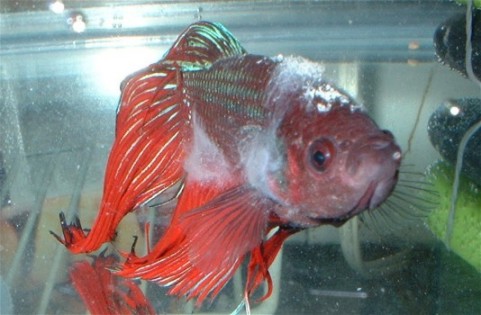- Your cart is empty
- Continue Shopping
Columanaris Infection in Fish: Symptoms, Prevention, and Treatment

Introduction:
Columanaris Infection, also known as Columnaris Disease, is a highly contagious bacterial infection that affects fish, including freshwater and saltwater species. The disease is caused by the Gram-negative bacteria Flavobacterium columnare and is a major concern for the fish farming industry. The infection can lead to significant economic losses and even mortality of fish populations.
In this article, we will discuss the symptoms, causes, prevention, and treatment of Columanaris Infection in fish.
Causes of Columanaris Infection in Fish:
The bacteria that cause Columanaris Infection are found in almost all aquatic environments. However, certain conditions can trigger the disease, including:
- Poor water quality
- Overcrowding
- Stressful conditions
- High organic loads
- Abrasions and wounds
The disease can spread rapidly through a fish population, especially in situations where there is high fish density and poor water quality.
Symptoms of Columanaris Infection in Fish:
Columanaris Infection can affect different parts of the fish's body, causing a variety of symptoms. Some common symptoms include:
- White or gray patches on the skin or fins
- Ulcerative lesions on the body
- Swollen and reddish gills
- Lethargy and loss of appetite
- Rapid breathing
- Erratic swimming
The severity of the symptoms can vary depending on the strain of bacteria, the species of fish, and the stage of the disease.

Prevention of Columanaris Infection in Fish:
Preventing Columanaris Infection is crucial for fish farmers to minimize economic losses and maintain fish populations. Here are some preventive measures that can be taken:
- Maintain good water quality by monitoring pH, temperature, and oxygen levels
- Avoid overcrowding of fish populations
- Reduce stress on fish by providing adequate space, food, and hiding places
- Quarantine new fish before adding them to the population
- Clean and disinfect equipment and facilities regularly
- Treat wounds and injuries promptly
By following these measures, fish farmers can minimize the risk of Columanaris Infection.
Treatment of Columanaris Infection in Fish:
If Columanaris Infection is suspected, prompt treatment is essential to prevent the spread of the disease. Some common treatments include:
- Antibiotics, such as florfenicol, oxytetracycline, and sulfadimethoxine
- Topical treatments, such as potassium permanganate and copper sulfate
- Bath treatments, such as potassium permanganate and formalin
The choice of treatment depends on the severity of the infection, the species of fish, and the stage of the disease. It is important to consult a veterinarian or fish health professional for proper diagnosis and treatment.
FAQs:
Q. Can Columanaris Infection spread to humans?
A. No, Columanaris Infection is not known to infect humans.
Q. Can fish recover from Columanaris Infection?
A. Yes, with prompt diagnosis and treatment, fish can recover from Columanaris Infection. However, the mortality rate can be high, especially in the advanced stages of the disease.
Conclusion:
Columanaris Infection is a common bacterial disease that affects fish populations, especially in the fish farming industry. It is caused by the bacteria Flavobacterium columnare and can lead to significant economic losses and even the mortality of fish. Preventive measures such as maintaining good

